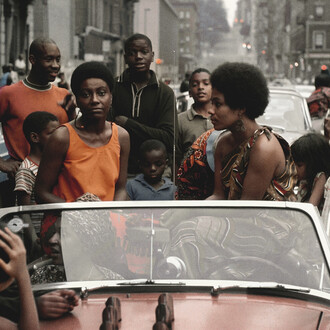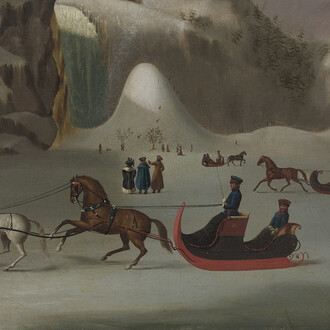Dina Goldstein is known for her conceptual and complex photographic work in a pop surrealist style. Her first major projects, In the Dollhouse and Fallen Princesses, were very successful. In the Dollhouse is an exploration of beauty, power and sexuality through images featuring the famous couple of overly perfect dolls, Ken and Barbie. The latter takes an ironic look at the Disney princesses, imagining them in real-life scenarios without happy endings.
Based in Vancouver, Goldstein explores a somewhat different territory this time. Gods of Suburbia presents a visual analysis of the place of religion and faith in today’s world. In the stagings she creates, the photographer places central figures of religion, objects of the faith of many people, in modern situations that highlight the points of friction between the messages and meanings of her gods and the ways of life in the suburbs.
In Last Supper, East Vancouver, Dina uses Leonardo da Vinci’s famous mural to recreate L’Ultima Cena, the meal between Jesus and his apostles in a street gang in Vancouver’s Downtown Eastside. This part of the city suffers from extreme poverty, where drug and alcohol addiction are omnipresent. This reconstruction shows us the paradox in our societies, where inequalities are ever greater and the greed of some is stronger to reach the spheres of power (the figure of Judas testifies to this).
There are lines of fracture in the society constituted by immigration and the suburbs. With Ganesha, we discover this famous character of Hinduism, from the south of India, he is the god who removes obstacles, recognizable with his elephant head. As an immigrant, this portrait reminds Goldstein of all the bullying and mockery she experienced at school. Difference undoubtedly pushes us towards isolation, to internalize our feelings and beliefs. It is a dangerous game, which leads to all forms of extremism, whereas by remaining open to other thoughts, other cultures have emerged grown, tolerant, fulfilled and this improves our lives.
With Buddha, Goldstein wants to illustrate commodification of religion and thus the dichotomy between religious concepts and our way of life today. Indeed, the choice of the decor of a high-end grocery store reflects the desires and the search for well-being of Westerners, but also the illusion of “organic” products thanks to a beautiful label. Yet, far from the ideals of Buddhism, which considers ignorance as poison, among other things, narcissism and West desire lead them to blindfold themselves permanently.
Gods of Suburbia challenges viewers to think about how complex iconography affects the way people view their gods, whether we ultimately need religion to make us moral and good, and whether religion still has meaning in modern society.
















